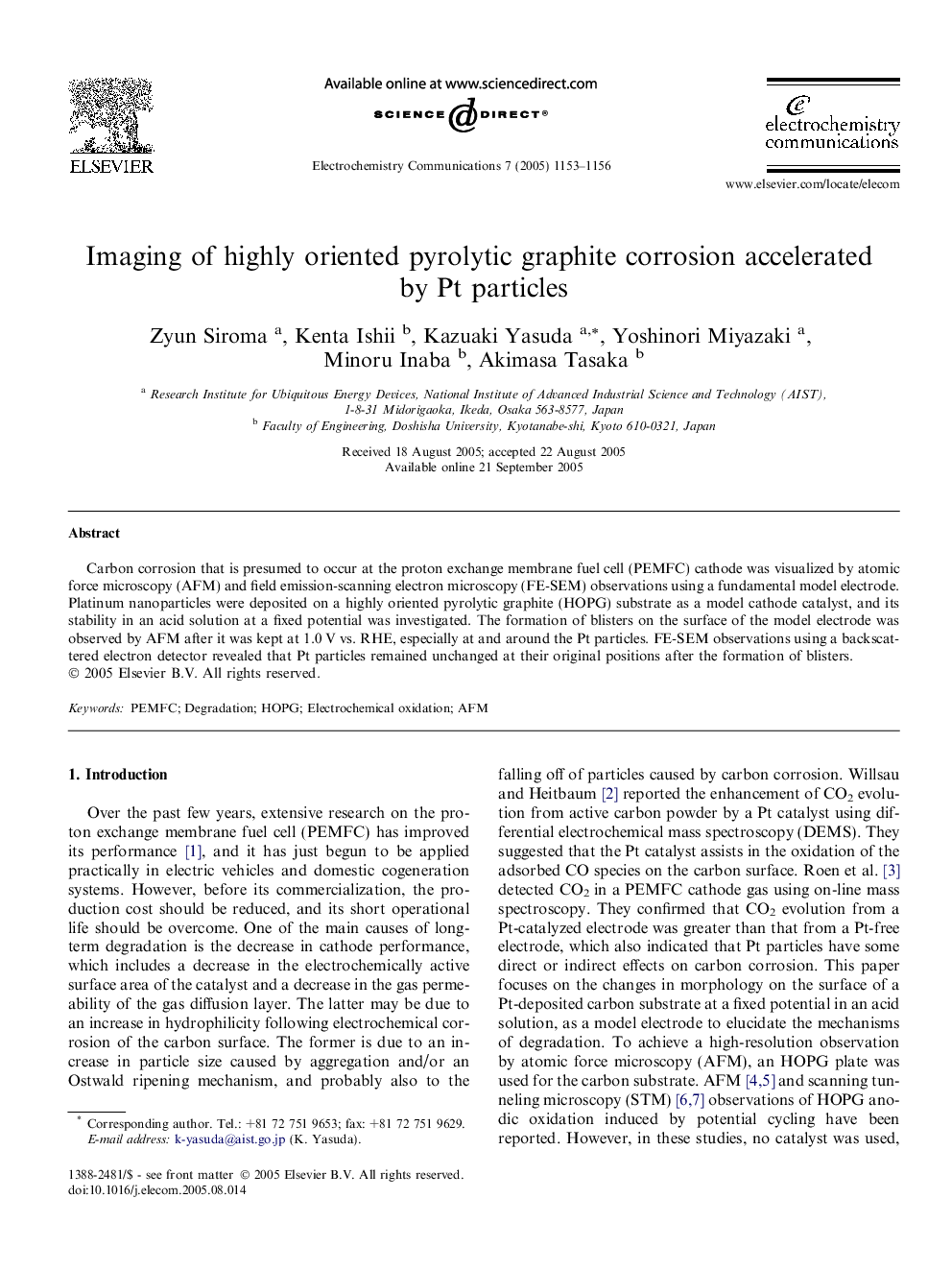| Article ID | Journal | Published Year | Pages | File Type |
|---|---|---|---|---|
| 10267077 | Electrochemistry Communications | 2005 | 4 Pages |
Abstract
Carbon corrosion that is presumed to occur at the proton exchange membrane fuel cell (PEMFC) cathode was visualized by atomic force microscopy (AFM) and field emission-scanning electron microscopy (FE-SEM) observations using a fundamental model electrode. Platinum nanoparticles were deposited on a highly oriented pyrolytic graphite (HOPG) substrate as a model cathode catalyst, and its stability in an acid solution at a fixed potential was investigated. The formation of blisters on the surface of the model electrode was observed by AFM after it was kept at 1.0Â V vs. RHE, especially at and around the Pt particles. FE-SEM observations using a backscattered electron detector revealed that Pt particles remained unchanged at their original positions after the formation of blisters.
Related Topics
Physical Sciences and Engineering
Chemical Engineering
Chemical Engineering (General)
Authors
Zyun Siroma, Kenta Ishii, Kazuaki Yasuda, Yoshinori Miyazaki, Minoru Inaba, Akimasa Tasaka,
